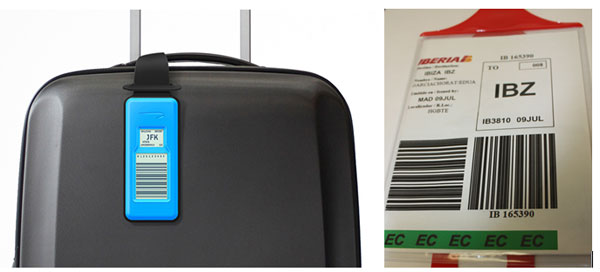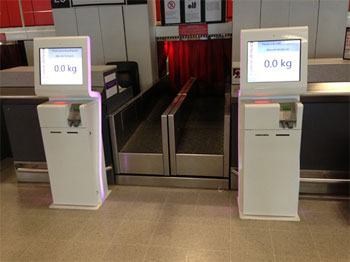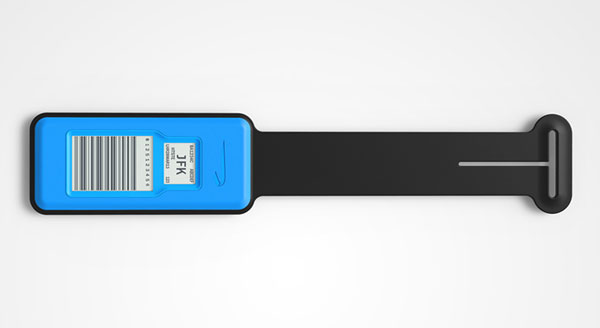
For any airport or airline intent on improving their passenger experience, baggage is one of the issues that must be towards the top of the agenda. According to SITA’s Baggage Report 2013, 8.83 bags per 1,000 were mishandled in 2012. Although significant improvements have been made – the mishandled rate has dropped 44.5% in the last six years – the industry still faces the problem of having almost nine unhappy customers out every 1,000.
In the last few months, exciting developments have been made, with the likes of Billund Airport and Iberia adopting home-printed bag tags, Edinburgh Airport becoming the first UK airport to make common-use bag drop available and British Airways starting a trial of permanent bag tags.
Although Edinburgh Airport’s self-service solution only went live last month, Sarah Gardner, Head of Terminal Operations, explained that passenger uptake has been positive. “It is still early days,” she explained, “but it has performed well in the past month and each day the passenger numbers using the facility have been increasing. As expected with new technology, it will take time for passengers to get used to it and to feel comfortable using it.”
So, what has the airport been doing to help passengers adapt to the new system? Gardner continued: “The machines are hosted, so there is always someone there to help the passengers and prevent them from attaching tags wrongly.”
Gardner and her team have also recognised an issue with the tags, which will now be addressed to improve the system. As some passengers are having trouble attaching the tags without assistance, new tags are being developed, which should make attaching the tags simpler.

Self-printing, self-tagging
Of course, Edinburgh Airport, along with easyJet and Flybe who offer the service to their passengers, is not the only airport or airline to have recently implemented self-service bag drop. American Airlines has this year installed a bag drop facility at Miami International Airport and Melbourne Airport has also announced plans to add a similar service as part of a $1 billion investment.
The widespread investment in bag drop highlights its appeal as a long-term solution, but another issue to address is what the best approach to printing the tags is. At Edinburgh Airport, passengers print the tags on-site, but others within the industry feel that printing the tags before arriving at the airport makes things even easier for the passenger. This is the approach Billund Airport opted for last year and Anders Nielsen, the airport’s VP Project & Development, told FTE that the system has so far met expectations.
“We’ve had a good experience with the home-printed bag tags,” he said. “They’re available to charter passengers and we’ve had an uptake of between 15-17%, which is about the same percentage of passengers who check-in online.”
Nielsen, who will be speaking about the project at FTE Global 2013, explained, however, that there have been a couple of challenges. The first is that if passengers print the tags when their ink is low, it could potentially cause problems with reading the tag, If this does happen, though, it is addressed when the tag is verified before being deposited at the bag drop, which means new tags can be printed at the airport if necessary.
The second issue is potentially more problematic. The home-printed bag tags aren’t currently recognised by the Customs codex, which means they are not officially recognised by Danish Customs. Nielsen explained that Billund Airport and IATA are addressing this issue with Danish Customs and the European Commission and while it’s not an immediate problem, it’s an issue that needs to be settled to ensure it doesn’t delay any future rollouts.
A permanent solution?

Another option, which is currently being trialled by British Airways and has previously been implemented by Qantas, is the permanent bag tag. This solution removes the need for any bag tag to be printed at all and instead allows passengers to use the same tag repeatedly.
Although BA explained to FTE that is too early to draw any conclusions from the ongoing trial, they did say the permanent bag tag has the potential to be a “game changer”. Frank van der Post, BA’s Managing Director, Brands and Customer Experience, said: “We believe it has the potential to revolutionise the way our customers check-in and pass through every airport around the world in the future.”
Choosing the right option
Clearly, home-printed and permanent bag tags both have their own benefits, so how do you know which one is best for your airline or airport? Well, according to Nielsen, both can be implemented concurrently.
“For Billund Airport, it only really makes sense to have the home-printed bag tags as we serve point-to-point traffic, which is what the tags are designed for,” he said. “However, there is no reason why an airport couldn’t offer both home-printed and permanent tags. Home-printed is ideal for point-to-point traffic, but permanent tags make more sense if a passenger has to connect.”
Although still in the early stages, home-printed and permanent bag tags are proving their worth and if they continue to live up to their potential, it is entirely conceivable that in the not-too-distant future, the majority of passengers will arrive at the airport with their bags already tagged and ready to drop off with no assistance whatsoever.
 FTE Global 2013, which will be held in Las Vegas from 4-6 September, will include a workshop entitled ‘What is the next big improvement for baggage set to be?’. Chaired by Michael J. Healy, VP – Infrastructure & Commercial Development, Halifax International Airport Authority, the session will include speakers from Billund Airport, Iberia, United Airlines, IER and Travelpro.
FTE Global 2013, which will be held in Las Vegas from 4-6 September, will include a workshop entitled ‘What is the next big improvement for baggage set to be?’. Chaired by Michael J. Healy, VP – Infrastructure & Commercial Development, Halifax International Airport Authority, the session will include speakers from Billund Airport, Iberia, United Airlines, IER and Travelpro.
» View the full FTE Global 2013 ‘On the Ground’ conference program
» Register to attend FTE Global 2013






